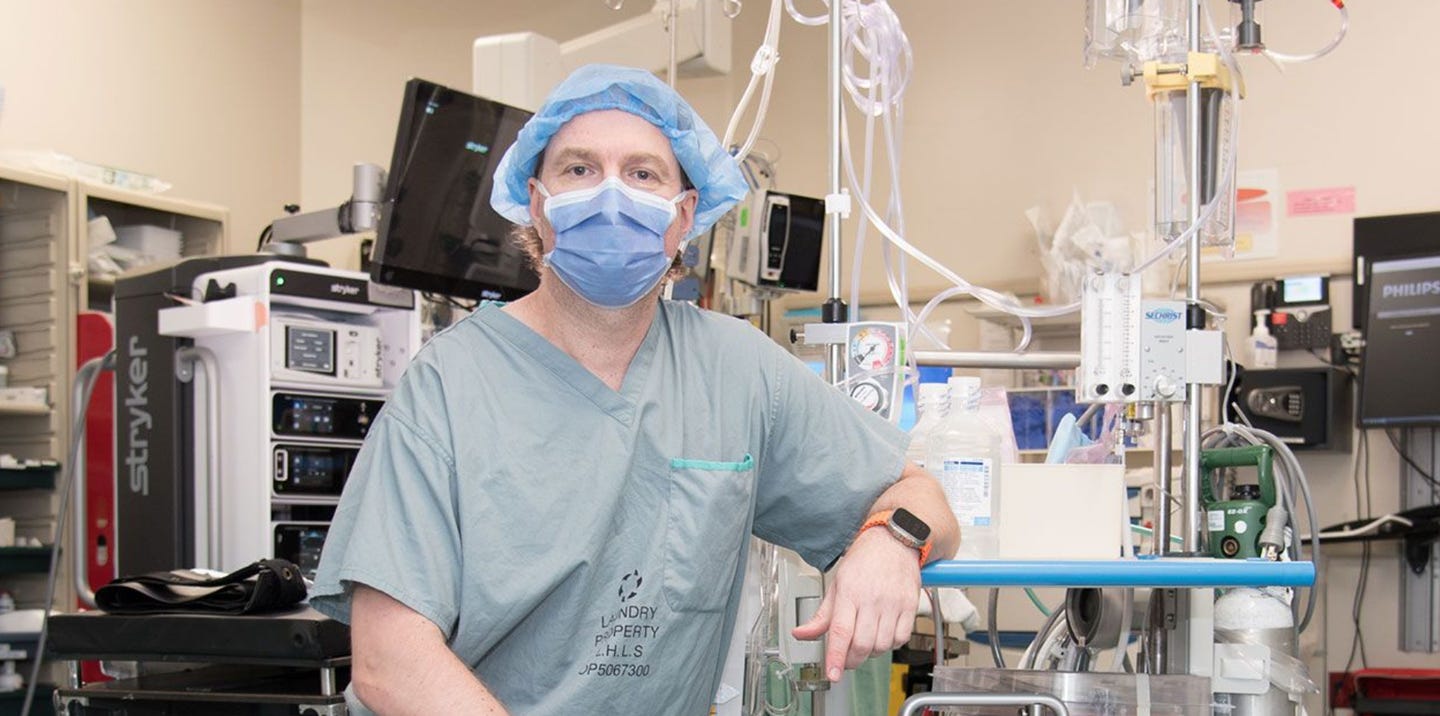Groundbreaking innovation could significantly increase number of organs available for transplant
This innovative approach could significantly increase the number of organs available for transplant.

A groundbreaking technique called abdominal normothermic regional perfusion (A-NRP) has been successfully used for the first time in Canada by a team at Lawson Health Research Institute. This innovative approach could significantly increase the number of organs available for transplant.
In April 2024, the team optimized organs from two donors using A-NRP at London Health Sciences Centre (LHSC), leading to the successful transplantation of two kidneys and two livers into four patients.
"Organ donation after circulatory death (when the heart stops beating) has historically been less reliable than organ donation after brain death," explained Dr. Anton Skaro, Associate Scientist at Lawson and Surgical Director of Liver Transplantation at LHSC. "This is because there is a higher risk of organ damage after circulatory death since oxygen and blood flow stop."
Dr. Skaro's team at LHSC was the first in Canada to use A-NRP. This technique involves using a special pump to selectively restore blood flow to abdominal organs after circulatory death, which can help protect the organs from damage. By ensuring the organs remain in better condition, A-NRP could increase the success rate of transplants, fulfill donor wishes, and improve patient outcomes.
"Unfortunately, we do not have enough donated organs to match the number of patients waiting for transplantation," said Dr. Skaro. "By protecting the quality of organs after circulatory death, A-NRP could help significantly increase the number of available donor organs to save more lives."
Currently, Dr. Skaro's research team is studying the safety and efficacy of A-NRP. They plan to include 20 to 30 donors in their study to thoroughly evaluate the technique.
Related Stories
Dr. Skaro emphasizes the vast potential of A-NRP. Once their study is complete, the team hopes to expand the use of this technique to other transplant centers across Canada.
"This work would not be possible without the collaborative efforts of a multidisciplinary team who have expertise in neurocritical care, perfusion, critical care, ethics, donation, and transplant," said Dr. Skaro. "It would also not be possible without the help of numerous partners, including Ontario Health (Trillium Gift of Life Network), and the generosity of the community and donors."
The research received generous funding from The Move for Life Foundation, London Health Science Foundation, Academic Medical Organization of Southwestern Ontario (AMOSO), and the Canadian Donation and Transplantation Research Innovation Grant.
This pioneering effort by Lawson Health Research Institute marks a significant advancement in the field of organ transplantation. A-NRP holds promise not only for increasing the availability of donor organs but also for improving the overall success rates of transplants. This could lead to more lives being saved and better health outcomes for patients in need of transplants.
The use of A-NRP represents a major step forward in addressing the critical shortage of donor organs. By mitigating the damage caused to organs after circulatory death, this technique has the potential to make more organs viable for transplantation. This is particularly crucial given the growing number of patients on transplant waiting lists.
Organ transplantation is a complex and delicate process, and the success of such procedures depends heavily on the condition of the donated organs. A-NRP provides a way to maintain organ quality even after the donor's heart has stopped, which is a significant improvement over traditional methods. This technique could become a standard practice in transplant centers, revolutionizing the way organ donations are handled and significantly increasing the number of successful transplants.
Dr. Skaro's team's pioneering use of A-NRP is a testament to the power of medical innovation and collaboration. Their work could pave the way for new protocols and practices in organ transplantation, offering hope to thousands of patients awaiting transplants. The success of this technique in the initial transplants is a promising sign, and further research will help to confirm its effectiveness and safety.
The potential benefits of A-NRP extend beyond just increasing the number of available organs. By improving the condition of donated organs, this technique could also enhance the quality of life for transplant recipients. Better organ quality can lead to fewer complications and longer-lasting transplants, which is a critical factor in the overall success of these procedures.
As Dr. Skaro and his team continue their research, the medical community will be closely watching their progress. The success of A-NRP could lead to widespread adoption of this technique, setting a new standard for organ transplantation in Canada and potentially around the world. This innovative approach could change the landscape of organ donation and transplantation, offering new hope to patients and their families.
With ongoing research and collaboration, A-NRP could become a game-changer in the field of organ transplantation, ultimately saving more lives and improving the quality of life for transplant recipients.
Note: Materials provided above by The Brighter Side of News. Content may be edited for style and length.
Like these kind of feel good stories? Get the Brighter Side of News' newsletter.
Joshua Shavit
Science & Technology Writer | AI and Robotics Reporter
Joshua Shavit is a Los Angeles-based science and technology writer with a passion for exploring the breakthroughs shaping the future. As a contributor to The Brighter Side of News, he focuses on positive and transformative advancements in AI, technology, physics, engineering, robotics and space science. Joshua is currently working towards a Bachelor of Science in Business Administration at the University of California, Berkeley. He combines his academic background with a talent for storytelling, making complex scientific discoveries engaging and accessible. His work highlights the innovators behind the ideas, bringing readers closer to the people driving progress.



